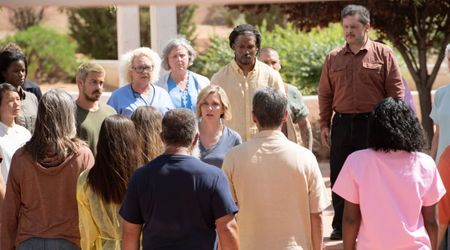'Gold Rush: White Water' Season 3: As Dakota Fred and Dustin Hurt look for yellow metal, a look at the biggest 19th-century rushes

A rapid movement of people to a newly discovered goldfield is called a “Gold Rush”. As the Discovery Channel docu-series ‘Gold Rush: White Water’ enters its third season, let us look at the history of gold rushes in the U.S. and Canada.
California
The year was 1848. John Sutter, a German-born Swiss pioneer settler and colonizer in California, was building a water-powered sawmill approximately 50 miles east of present-day Sacramento. On January 2, 1848, Sutter’s carpenter, James W. Marshall, found flakes of gold in a streambed.
Sutter and Marshall agreed to become partners and tried to keep their find a secret, but soon, news of the discovery spread. According to History.com, days after Marshall’s discovery, the Treaty of Guadalupe Hidalgo was signed, ending the Mexican-American War and leaving California in the hands of the United States.
The word of their newfound fortune spread sometime in the next couple of months. By mid-June, however, almost three-quarters of the male population of San Francisco had left town for the gold mines and the number of miners in the area reached 4,000 by August.
Just like 'Dakota' Fred Hurt and his son Dustin Hurt in 'Gold Rush: White Water', all throughout 1849, men from across the country borrowed money, mortgaged their property or spent their life savings to make the arduous journey to California in search of the yellow metal. So much so, the population of non-natives in the area grew from 20,000 to 100,000.
By about 1855, more than 300,000 people had arrived. With more people arriving in California, lawlessness became more and rampant. Of course, lawless and violent mining camps soon gave way to permanent settlements with organized government and law enforcement.
All good things, however, come to an end. Even though gold mining continued throughout the 1850s, it peaked by 1852. According to History.com, almost $81 million worth of gold was pulled from the ground, that year.
After that, however, the total take declined gradually, leveling off to around $45 million per year by 1857. The gold rush in California ended along with the decade. But it will always remain a historical milestone.
Klondike, Yukon Territory, Canada
The Klondike Gold Rush, also called the Yukon Gold Rush, was the mass exodus of prospecting migrants to the Canadian Yukon Territory and Alaska after gold was discovered there in 1896. According to History.com, even though prospectors trickled into the Yukon in search of gold in the 1870s, it was only in 1896 when the rush finally took place.
And it was all thanks to three men called George Carmack, Jim Mason and Dawson Charlie. On August 16, 1896, Carmack, along with Mason and Charlie discovered Yukon gold on Rabbit Creek, a Klondike River tributary that ran through both Alaskan and Yukon Territory.
Because conditions in the Yukon were harsh, communication with the outside world was extremely difficult. As a result, the word didn’t get out about the Klondike gold discovery until 1897. But once it did, hoards arrived at the basin in search of treasure.
Of course, all wasn't well for the men who arrived. For one, the journey was an extremely difficult one. Many fell sick and died in the harsh conditions. For others, who arrived in the winters, they had to wait for months for the ice to thaw before they could begin their hunt.
According to the National Parks Service in the U.S., "Stampeders faced their greatest hardships on the Chilkoot Trail out of Dyea and the White Pass Trail out of Skagway. There were murders and suicides, disease and malnutrition, and deaths from hypothermia, avalanche, and possibly even heartbreak."
As per History.com, while the discovery of Yukon gold made a few lucky miners rich beyond their wildest dreams, many more were disappointed. The great Klondike Gold Rush ended as suddenly as it had begun. It slowed by the end of 1898 as word got out there was little gold left to be had. By 1899, the rush ended with the discovery of gold in Nome, Alaska.
‘Gold Rush: White Water’ airs on The Discovery Channel every Sunday at 10 p.m. ET.










